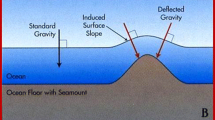Abstract
The main purpose of this work is to report the presence of spurious discontinuities in the pattern of diurnal variation of sea level pressure of the three reanalysis datasets from: the National Centers for Environmental Prediction (NCEP) and National Center for Atmospheric Science (R1), the NCEP and Department of Energy (R2), and the European Centre for Medium Range Weather Forecasting (ERA-40). Such discontinuities can be connected to the major changes in the global observing system that have occurred throughout reanalyses years. In the R1, the richest period in discontinuities is 1956–1958, coinciding with the start of modern radiosonde observation network. Rapid increase in the density of surface-based observations from 1967 also had an important impact on both R1 and ERA-40, with larger impact on R1. The reanalyses show discontinuities in the 1970s related to the assimilation of radiances measured by the Vertical Temperature Profile Radiometer and TIROS-N Operational Vertical Sounders onboard satellites. In the ERA-40, which additionally assimilated Special Sensor Microwave/Imager data, there are discontinuities in 1987–1989. The R1 also presents further discontinuities, in 1988–1993 likely connected to replacement/introduction of NOAA-series satellites with different biases, and to the volcanic eruption of Mount Pinatubo in June 1991, which is known to have severely affected measurements of infrared radiances for several years. The discontinuities in 1996–1998 might be partially connected to change in the type of radiosonde, from VIZ-B to VIZ-B2. The R2, which covers only satellite era (1979-on), shows discontinuities mainly in 1992, 1996–1997, and 2001. The discontinuities in 1992 and 2001 might have been caused by change in the satellite measurements and those in 1996–1997 by some changes in land-based observations network.











Similar content being viewed by others
References
Barry D, Hartigan JA (1992) Product partition models for change point problem. Ann Stat 20:260–279
Barry D, Hartigan JA (1993) A Bayesian analysis for change point problems. J Am Stat Assoc 88:309–319
Christy JR, Norris WB (2006) Satellite and VIZ–radiosonde intercomparisons for diagnosis of nonclimatic influences. J Atmos Ocean Technol 3:1181–1194
Dai A, Wang J (1999) Diurnal and semidiurnal tides in global surface pressure fields. J Atmos Sci 56:3874–3891
Dee DP, Uppala S (2009) Variational bias correction of satellite radiance data in the ERA-interim reanalysis. QJR Meteorol Soc 135:1830–1841. doi:10.1002/qj.493
Dell’ Áquila A, Lucarini V, Ruti PM, Calmanti S (2005) Hayashi spectra of the northern hemisphere mid-latitude atmospheric variability in the NCEP-NCAR and ECMWF reanalyses. Clim Dyn 25:639–652. doi:10.1007/s00382-005-0048-x
Haimberger L (2007) Homogenization of radiosonde temperature time series using innovation statistics. J Clim 20:1377–1403
Hoinka KP (2007) Semi-diurnal pressure fluctuation in the ERA-40 Data. Meteorol Z 16:255–260
Jenne R (1999) Global observations for reanalysis, 1948-on. In: Proceedings of the 2nd WCRP international conference on reanalysis. WCRP report 109
Kalnay E, Kanamitsu M, Kistler R, Collins W, Deaven D, Gandin L, Iredell M, Saha S, White G, Woollen J, Zhu Y, Chelliah M, Ebisuzaki W, Higgins W, Janowiak J, Mo KC, Ropelewski C, Wang J, Leetmaa A, Reynolds R, Jenne R, Joseph D (1996) The NCEP/NCAR 40-year reanalysis project. Bull Am Meteorol Soc 77:437–471
Kanamitsu M, Ebisuzaki W, Woollen J, Yang S-K, Hnilo JJ, Fiorino M, Potter GL (2002) NCEP-DOE AMIP-II Reanalysis (R-2). Bull Am Meteorol Soc 83:1631–1643
Kistler R, Kalnay E, Collins W, Saha S, White G, Woollen J, Chelliah M, Ebisuzaki W, Kanamitsu M, Kousky V, van den Dool H, Jenne R, Fiorino M (2001) The NCEP-NCAR 50-year reanalysis: monthly means CD-ROM and documentation. Bull Am Meteorol Soc 82:247–267
Reboita MS, da Rocha RP, Ambrizzi T, Sugahara S (2010) South Atlantic Ocean cyclogenesis climatology simulated by regional climate model (RegCM3). Clim Dyn 35:1331–1347. doi:10.1007/s00382-009-0668-7
Rodionov SN (2004) A sequential algorithm for testing climate regime shifts. Geophys Res Lett 31:L09204. doi:10.1029/2004GL019448
Rodionov SN (2006) Use of prewhitening in climate regime shift detection. Geophys Res Lett 33:L12707. doi:10.1029/2006GL025904
Seaman R, Hart T (2003) The history of PAOBs in the Australian Bureau of Meteorology. Aust Metrol Mag 52:241–250
Sheather SJ, Jones MC (1991) A reliable data-based bandwidth selection method for kernel density. J R Stat Soc B 53:683–690
Shi L, Bates JJ, Li X, Uppala SM, Kelly G (2008) Extending the satellite sounding archive back in time: the vertical temperature profile radiometer data. J Appl Remote Sens 2(023506):1–13
Simmons AJ, Jones PD, Bechtold VC, Beljaars ACM, Kallberg PW, Saarinen S, Uppala SM, Viterbo P, Wedi N (2004) Comparison of trends and low-frequency variability in CRU, ERA-40, and NCEP/NCAR analyses of surface air temperature. J Geophys Res 109:D24115. doi:10.1029/2004JD005306
Sterl A (2004) On the (in)homogeneity of reanalysis products. J Clim 17:3866–3873
Sturaro G (2003) A closer look at the climatological discontinuities present in the NCEP/NCAR reanalysis temperature due to the introduction of satellite data. Clim Dyn 21:309–316
Uppala SM et al (2005) The ERA40 reanalysis. QJR Meteorol Soc 131:2961–3012
Wallace JM, Hobbs PV (2006) Atmospheric science: an introductory survey, 2nd edn. Academic Press, London
Acknowledgments
Shigetoshi Sugahara received support from Brazilian Financial Support Agency (FINEP, contract #01.09.0078.00) and from Conselho Nacional de Desenvolvimento Científico e Tecnológico (CNPq. 558121/2009-8), Rosmeri P. da Rocha (CNPq. 558121/2009-8 and 307519/2008-2, CLARIS-LPB) and Reinaldo Silveira from FINEP contract #01.09.0078.00. Rita Yuri Ynoue and Rosmeri P. da Rocha are supported by CAPES. The reanalysis datasets from R1 and R2 have been provided by NOAA/OAR/ESRL PSD from their Web site at http://www.esrl.noaa.gov/psd. The ECMWF ERA-40 data have been provided by ECMWF Web site.
Author information
Authors and Affiliations
Corresponding author
Rights and permissions
About this article
Cite this article
Sugahara, S., da Rocha, R.P., Ynoue, R.Y. et al. Spurious shifts in the pattern of diurnal variation of sea level pressure of reanalysis datasets. Clim Dyn 40, 175–186 (2013). https://doi.org/10.1007/s00382-012-1338-8
Received:
Accepted:
Published:
Issue Date:
DOI: https://doi.org/10.1007/s00382-012-1338-8




